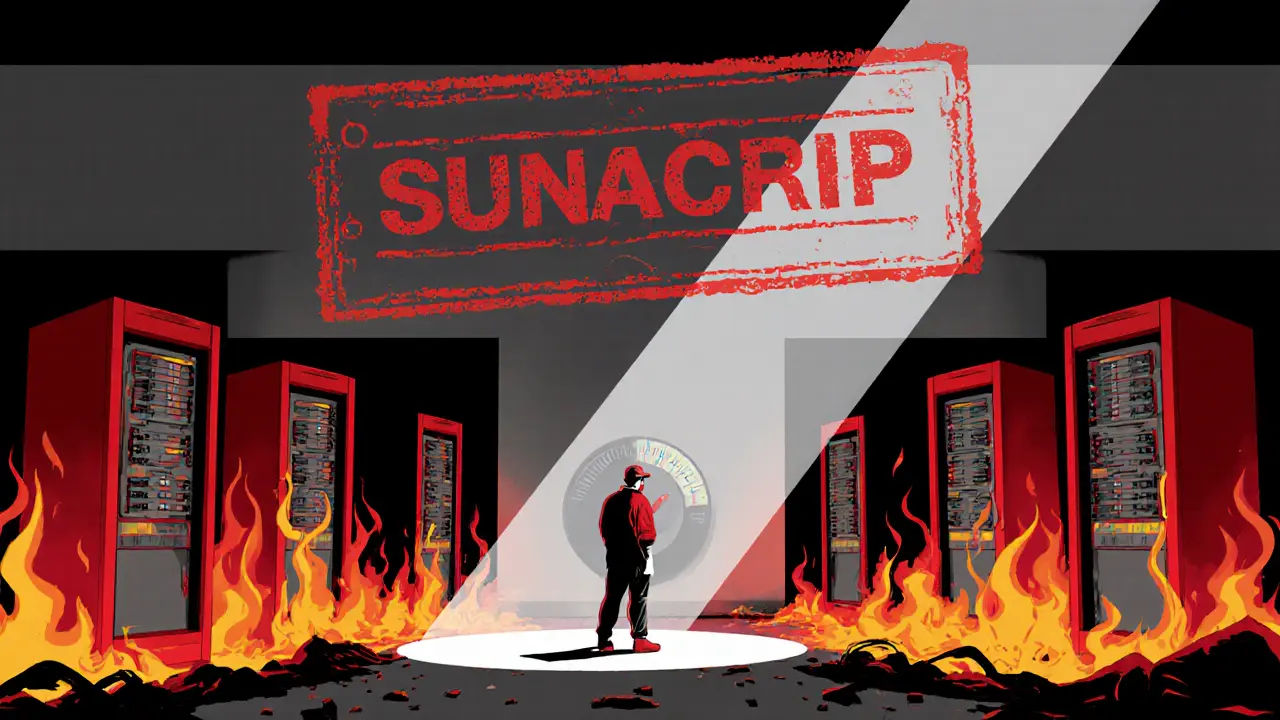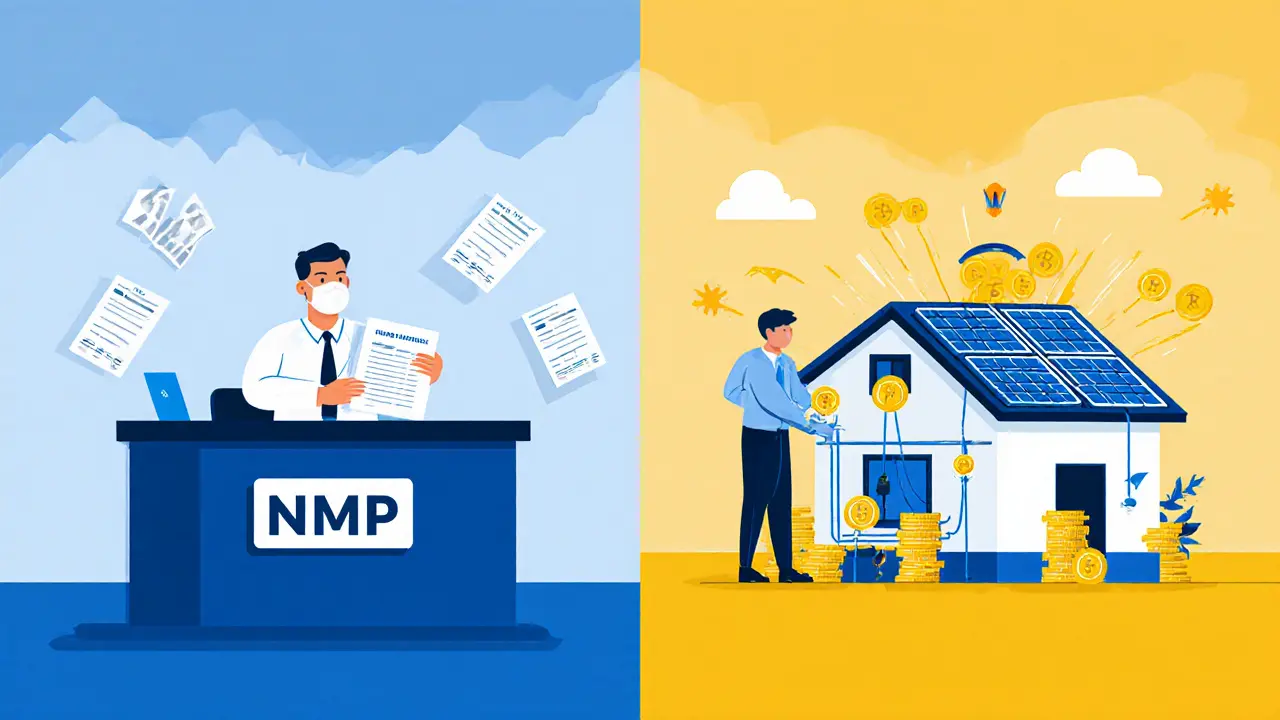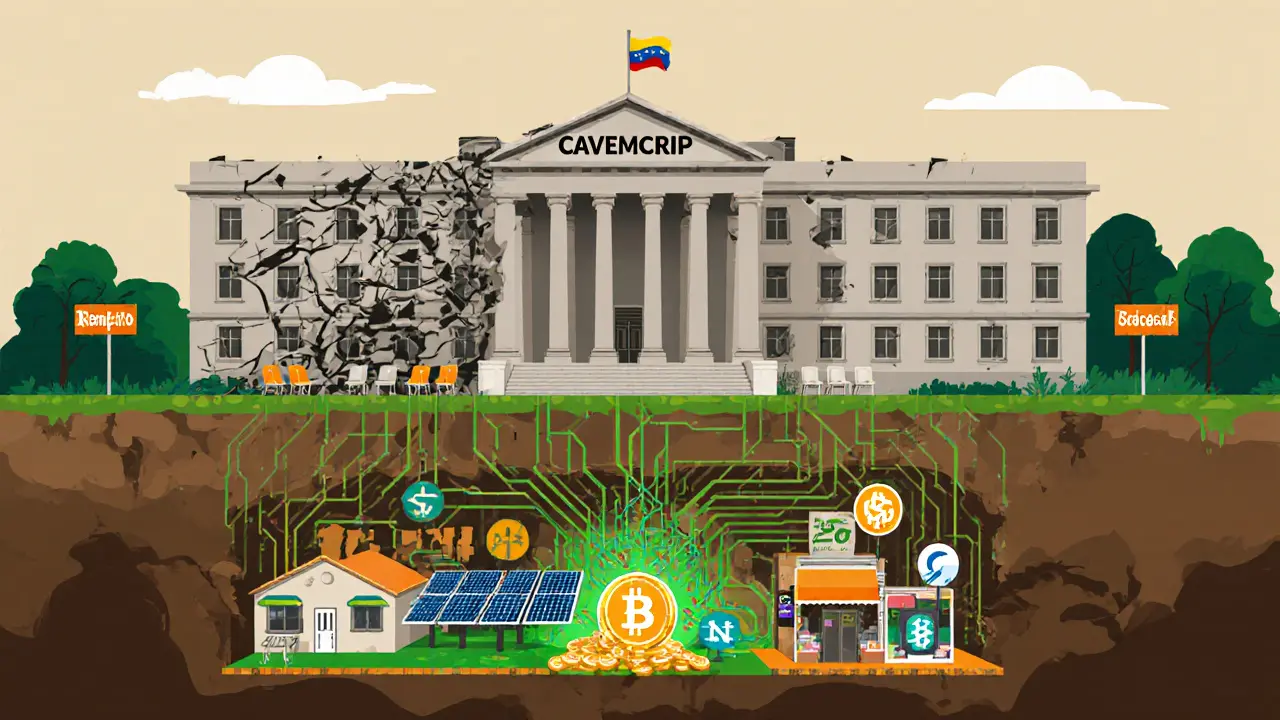
Venezuela Mining Profitability Calculator
Calculate Your Mining Profitability
When Venezuela launched its state-run crypto mining system, it wasn’t just about making money from Bitcoin. It was a desperate attempt to bypass sanctions, keep the economy afloat, and turn the country’s cheap electricity into a national asset. But today, that system is a mess of laws that exist on paper and operations that barely function in reality.
How the Government Took Control
In 2018, Venezuela created SUNACRIP - the National Superintendence of Cryptocurrencies - to be the single boss of all crypto mining in the country. This wasn’t just oversight. It was total control. Every miner, big or small, had to register with SUNACRIP. They had to use the government’s National Mining Pool (NMP) to earn rewards. No exceptions. If you mined Bitcoin or Ethereum without permission, you were breaking the law.The legal backbone came from Presidential Decree No. 4,170 and the Cryptoassets Constituent Decree. These documents gave the government the power to regulate everything: who could mine, how they mined, where the power came from, and where the coins went. The goal? To funnel mining profits into state coffers and use crypto to dodge U.S. financial restrictions.
By 2020, the rules got even tighter. Miners had to join one of two registries: RISEC for service providers or RIM for miners. You needed proof of at least 500kW of electricity capacity, your equipment serial numbers, and government-approved ID. Approval took 90 to 120 days. Most small miners gave up before they even started.
The Energy Paradox
Venezuela has some of the cheapest electricity in the world - around $0.03 per kWh. That’s less than half the global average. For crypto mining, that’s a dream. But here’s the catch: the grid doesn’t work.In 2023, miners reported 40 to 60 hours of blackouts every month. To keep machines running, they had to buy diesel generators. That added 25% to their operating costs. The government’s answer? Tell miners to use the National Mining Pool - a system that was never built to handle real-world power failures.
Even when the power came on, the NMP often failed. Miners complained about delayed payouts, lost shares, and system crashes. One study found miners on the NMP were 15-20% less efficient than those mining independently. That’s not control - that’s a bottleneck.

Corruption and Collapse
In March 2023, everything froze. A corruption probe hit the oil and crypto ministries. SUNACRIP shut down. Licenses expired. New applications stopped. Around 300 licensed mining centers were suddenly shut down overnight. No warning. No explanation.By 2024, the agency was reorganized - but not fixed. A new group called CAVEMCRIP was created to involve the private sector. But it had no real power. SUNACRIP still existed on paper, but no one was in charge. The head of the crypto ministry was removed. Investigations dragged on. The system became a ghost.
Industry analysts call it “chaotic.” Legal? Yes. Functional? No. OneSafe’s 2024 report said the gap between law and reality was wider than ever. You could be legally licensed one day and shut down the next - not because you broke rules, but because the government changed its mind.
Why People Still Mine
Despite the chaos, crypto use in Venezuela keeps growing. About 70% of Venezuelans now use stablecoins like USDT to buy food, pay rent, or send money home. Hyperinflation wiped out the bolívar. Crypto became the only reliable currency.That’s why the government hasn’t fully killed mining. It can’t. People need it. In 2024, blockchain transactions jumped 35% year-over-year. Startups like El Dorado and Yeet raised over $10 million in crypto funding. The state even launched Conexus - a blockchain-based banking network that will let banks handle Bitcoin and stablecoins by December 2025.
But here’s the twist: the government still wants to control it. Even as banks prepare to offer crypto services, SUNACRIP’s rules still apply. Miners still need licenses. Exchanges still need approval. The system is broken, but the paperwork hasn’t changed.

The Reality Today
As of November 2025, Venezuela’s crypto mining scene is split in two.On one side, there are the licensed miners - maybe 500 centers total - still trying to operate under the old rules. They pay bribes to keep their licenses alive. They run generators. They wait for NMP payouts that never come.
On the other side, there are the underground miners. Thousands of them. They use home rigs, solar panels, and hidden power lines. They don’t register. They don’t report. They just mine. And they’re growing.
Some experts say Venezuela’s model is a failure. Others say it’s the only thing keeping the economy from total collapse. The truth? It’s both.
The government still claims crypto mining contributes 4% to GDP. But without reliable data, no one knows if that’s real. What we do know: electricity use from mining is still around 10% of the national grid. And every time the lights go out, the government blames miners.
What’s Next?
The big move coming is the December 2025 launch of bank-based crypto services. Banks will be allowed to custody Bitcoin and stablecoins. That could finally bring legitimacy - if the system works.But the same government that shut down mining in 2023 is the one now promising banking integration. There’s no trust. No consistency. No clear leadership.
Until there’s real reform - not just new names for old agencies - Venezuela’s crypto mining will stay stuck between law and chaos. The electricity is cheap. The need is real. But the state’s control? It’s more of a trap than a tool.
Leisa Mason
20 11 25 / 18:16 PMThis is textbook state overreach disguised as economic policy. Venezuela didn't create a mining ecosystem - they built a bureaucratic graveyard with electricity bills. The 4% GDP claim? Pure fiction. No audit. No transparency. Just propaganda wrapped in blockchain jargon.
Rob Sutherland
22 11 25 / 09:40 AMIt's tragic how necessity forces innovation. The people aren't mining for profit - they're mining to survive. The state's control isn't about regulation. It's about fear. Fear of losing power. Fear of people finding a way out without them.
Tim Lynch
22 11 25 / 14:57 PMThere's a quiet irony here. The same government that can't keep the lights on for 24 hours is trying to control a decentralized, global network built on uptime and trustless systems. It's like trying to herd cats with a spreadsheet. The infrastructure is broken. The ideology is outdated. And yet - people keep mining anyway.
Melina Lane
24 11 25 / 09:21 AMHonestly? I'm inspired. People are using crypto not as a speculative asset but as a lifeline. That’s real resilience. No government can take that away - not even with 90-day approval forms and corrupt bureaucrats.
Dexter Guarujá
26 11 25 / 05:45 AMThis is what happens when you let socialists run an economy. They don't understand technology. They don't understand markets. They just want to control everything. Venezuela's collapse wasn't caused by sanctions - it was caused by incompetence and arrogance.
Jennifer Corley
27 11 25 / 04:20 AMYou say people are mining to survive, but did you consider that their underground rigs are draining the grid even more? They're not heroes - they're free riders. The state should shut them down permanently. It's not cruel. It's responsible.
Natalie Reichstein
28 11 25 / 00:39 AMYou think underground miners are victims? They're criminals. They're stealing public resources. Electricity isn't a right - it's a privilege granted by the state. And they're violating the law. No sympathy. No exceptions.
Kaitlyn Boone
29 11 25 / 19:16 PMthe whole thing is a joke. gov says one thing, does another. miners get shut down for no reason. then they act surprised when people go underground. duh.
James Edwin
30 11 25 / 19:29 PMI wonder how many of these underground miners are using solar. If they’re combining renewables with crypto mining, that’s actually a brilliant adaptation. Maybe the future of energy resilience isn’t in centralized grids - it’s in decentralized, community-run microgrids.
Kris Young
2 12 25 / 05:33 AMThe government created rules. The rules were poorly enforced. The rules were changed without notice. The rules were ignored. This is not a failure of technology. This is a failure of governance. Clear rules, consistent enforcement, and accountability matter.
LaTanya Orr
2 12 25 / 05:35 AMI think the real story isn't the state's control - it's how people found a way to live despite it. The system is broken but the human spirit isn't. That's why crypto keeps growing. Not because the government wants it to. But because people have no other choice.
Marilyn Manriquez
4 12 25 / 00:02 AMIn the context of global economic inequality, Venezuela's situation represents a profound human adaptation. The state's attempt to monopolize digital currency reflects a broader pattern of centralized power resisting decentralization. Yet the persistence of grassroots mining signals a quiet revolution - one not led by institutions, but by necessity.
taliyah trice
4 12 25 / 15:43 PMpeople just want to eat. they dont care about laws or who owns the mining. if the lights go out, they use solar. if the system crashes, they use usdt. simple.